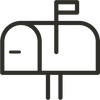
Beyond good intentions
The start of a new year is perhaps the most popular time to take control (or regain control) of your health. Now that the new year is well underway, where are your resolutions ?
While many make a pact with themselves to improve their physical condition , too few manage to stick with it and enjoy the results. Where is the problem ? Are the objectives realistic? Is the energy enough? Is the pleasure there? Are the requirements of the pathway well understood? All these questions are of great importance and their answers may very well direct your fitness towards success or failure .
Let's look at some tips that might help you breathe new life into your good January intentions. After all, the goal is to find a better quality of life for yourself. You just need to put in the effort at the beginning so that everything comes together afterwards!
Please note, this article sets out generalities which may not suit you. If you have a specific physical condition or are taking medication, please consult your healthcare professional before making any habit changes.
Establish realistic goals
We are often the harshest critic of ourselves. But what’s the point of having all the best intentions in the world if they aren’t realistic or even achievable. Create a detailed plan of what you would like and how you plan to achieve it. Take out paper and pencil and write it all down . Writing is concrete and real and will allow you to objectively measure your progress and accomplishments .
For what ?
At the very top of the list of goals should be your why . Your why is the reason you are making these changes . It's not a goal or what you want. Rather, it's what you'll fall back on when you feel like giving up.
Why do I decide to take charge? Why am I getting back into training? Why do I want to take my precious time to practice an activity that will take me out of my comfort zone?
Do you understand the exercise? Your why is not a goal to achieve, but rather the reason to take the path that will take you there. Your entire journey is based on your why.
Your short and long term goals
It is essential to set goals for yourself. On your paper, separate them into two categories: long-term goals and short-term goals.
Let's say you want to lose weight. Your long-term goal is (hypothetically) to lose 30 pounds in one year. It's clear and quantifiable . You think it's entirely possible for you . Perfect !
Now, to avoid seeing your goal of losing 30 pounds in a year as a mountain, it is important to set smaller goals . Short-term goals. For example, lose 5 pounds in the first month, then 3 pounds per month every month for the rest of the year.
Short-term goals are an opportunity to get where you need to go without deviating from your path. They allow you to take stock along the way, either by congratulating you when you have achieved it, or by evaluating your methods if you arrive short.
Whatever the objective set, whether short or long term, make sure that it is realistic and achievable according to your abilities and ambitions.
Be determined, but resilient
Determination will take you far. However, it can also be detrimental if you do not demonstrate resilience . Life being what it is, unforeseen events will get in your way from time to time. In case of setbacks, fatigue or a little pain, do not hesitate to modify your schedule . Prioritize your goals, but adapt to life , you will have more fun!
Have fun
What better way to lose motivation than to repeatedly do an activity you don't enjoy? There are so many ways to exercise, don't just choose what is most cost-effective, choose what is most enjoyable and motivating for you . Over time, you may see your interests, motivations, and discipline change and allow you to practice more challenging workouts. Listen to your body and surrender to the process!
Remember, health also involves happiness and pleasure!
A new diet
If you are looking for better health , you have probably also thought about reviewing your diet . It's a great idea, but how to do it and where to start?
A diet that reflects your goals
You will agree that the diet of a person who wants to gain muscle mass will not be exactly the same as that of someone who wants to lose weight. Indeed, the contents of your plate should represent your goals , even if you have no desire to change your physical appearance. With a carefully established intake of calories, carbohydrates, proteins and fats , you will be more likely to achieve your goals.
If you are aiming for weight loss , diet will be your best ally. Numerous studies have shown that a slight calorie deficit is more beneficial for fat loss than training. Please note, this does not mean that physical activity is obsolete either. Rather, it means that the contents of your plate will cause the desired change while exercise will increase calorie expenditure, widening your calorie deficit a little further without reducing your portions further.
If, on the contrary, you want to gain muscle mass , training will be your main tool. Your diet will support it and provide your body with the energy and nutrients necessary for the growth of lean mass. It will therefore be important to aim for a caloric surplus . Just like you can't make an omelet without breaking an egg, you can't hope for muscle growth without gaining a little fat. A well-adapted training program, diet and monitoring will allow you to achieve the expected results.
Finally, if you are not planning major changes in your figure , but simply improving your diet, you will need to determine your maintenance calorie intake . At this point, calorie intake is relatively equal to expenditure.
The right calorie intake
Now you know, your calorie intake plays a major role in your progress . It is therefore essential to set a number that will meet your individual needs and objectives .
Rule #1 : Establishing your intake of calories, carbohydrates, proteins and fats takes time and patience .
Rule #2 : Don’t be drastic . Values that are too extreme will tend to harm your progress and possibly even your health. Go very moderately.
Rule #3 : To each their own strengths. Call a professional you trust and who will understand your needs .
Food is more than just numbers!
If you didn't know, La Moisson is first and foremost a healthy grocery store . Since its founding, more than 30 years ago, healthy eating has been king and a balanced diet is key.
In your journey towards well-being, it is imperative to review the contents of your plate , not only in terms of numbers, but also in terms of quality. Focus on nutrients, diversity and freshness . All these elements will provide you with the energy necessary to evolve and will adequately nourish your body for better recovery .
Vegetables should have a pride of place in each of your meals. They will provide you with valuable nutrients and a good amount of fiber .
Tip: If you are in a calorie deficit, vegetables will add more volume to your meals without costing you a very large number of calories. They will help you feel fuller.
Starchy foods are also of great importance (unless you follow a ketogenic eating pattern). They will provide stable and lasting energy to your body.
Tip: Depending on your digestive system, it might be best to avoid them right before a workout.
Proteins , whether plant or animal, are essential. It is thanks to it that you will build and repair your muscle mass during and after your training. It is also thanks to them that you will feel hungry less quickly. All your meals should include a generous portion of protein.
Tip: It is recommended to consume protein at least 2 hours before and after a vigorous workout to promote recovery during and after your exercise session.
As you add healthier foods to your diet, evaluate what could be removed . Take it gradually. Target what you believe to be the biggest problem in your diet and start there. For example, avoid foods that are overly processed, refined, or sugary .
Natural products, to consider or to avoid?
The natural products market is full of all kinds of supplements for weight management, fitness, muscle growth, meal replacement, and more. Depending on your needs and goals, it is up to you to determine if they have a place in your routine. One thing is certain, make sure that the list of ingredients is interesting and above all that the product in question is suitable for your state of health .
To help you see things more clearly, it is important to understand the usefulness of these supplements. Here is a short list of popular products in the sports world.
Protein powders
Plant-based or animal-based, protein powders are a great supplement to meet your daily protein needs . However, they should not be used other than as a dietary supplement. With a few exceptions here and there, your meals should prioritize foods.
Green food powders
Just like protein powders, green food powders are an excellent dietary supplement. They will provide you with an immense amount of valuable nutrients and antioxidants for your body. However, they should never replace fruits and vegetables.
Electrolytes
Electrolytes are those minerals you lose through sweat. You should replace them either by adding a portion of this supplement to your water or by making sure you replenish your losses with your diet.
Magnesium
A must for any athlete, regardless of their level. Magnesium allows relaxation and muscle relaxation . When engaging in physical activity, your muscles must contract and relax often, quickly and efficiently. Without magnesium, the process does not take place adequately during training and recovery may be more painful in the following days. You risk lots of cramps!
Tip: To accelerate muscle recovery and limit aches, apply Epsom gel locally, a very effective formulation based on magnesium.
Creatine
Creatine is possibly one of the most scientifically studied athletic supplements. It has proven to be effective and safe for muscle growth . However, if you do not want to increase your lean body mass, using creatine would instead prove to be a waste of money for you.
BCAA vs. EAA
BCAAs (branched chain amino acids) and EAAs (essential amino acids) are very popular in the athletic community. Their usefulness is just as controversial. Each is perceived by its users as being the key to success for muscle growth . However, the most purists will say that a good quality protein powder is enough to provide the necessary intake of BCAA and EAA. The winning answer is experience! Do your own testing and see what works best for you.
Please note, you may have a physical condition that requires the attention of a health professional before using the concepts covered in this article. Don't ignore it!
